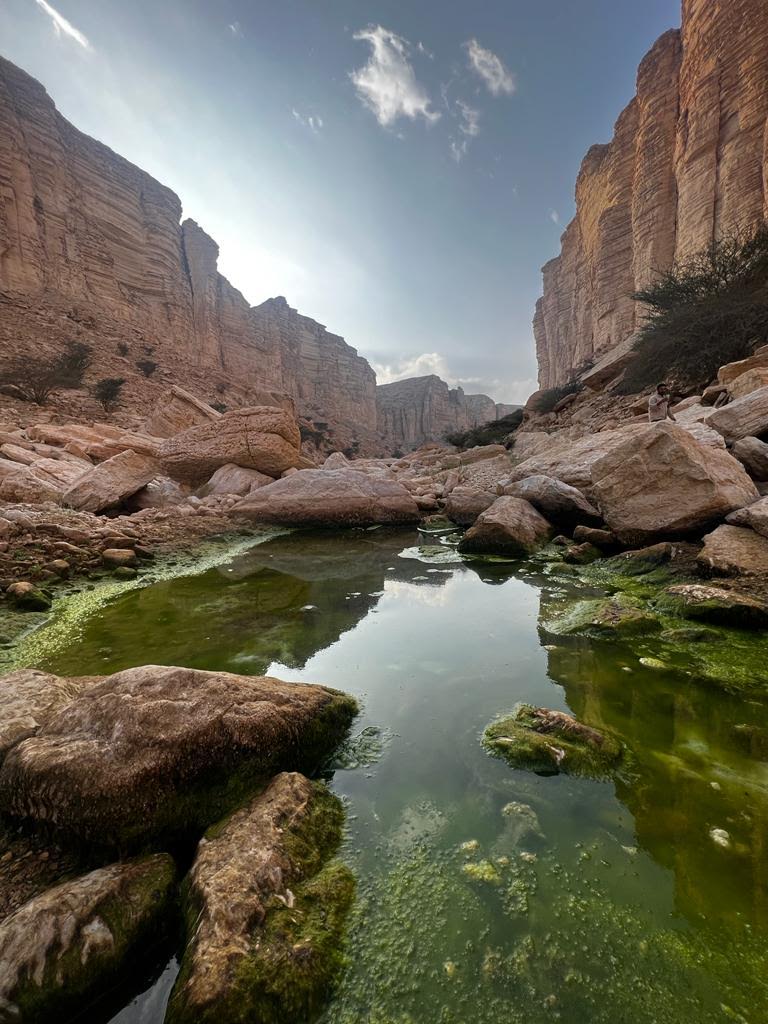
Photo sent by the Saudi Arabia government. Where are the ibex they are protecting?
The Saudi National Center for Wildlife (NCW) proudly announces that the International Union for Conservation of Nature (IUCN) has added the Ibex Protected Area to its exclusive Green List. The IUCN Green List recognizes protected and conserved areas globally that excel across governance, planning and design, effective management, and achieving positive conservation outcomes.
Ibex Protected Area, located 180 km south of Riyadh, joins IUCN Green List, which sets the global standard for protected and conserved areas management
Out of more than 300,000 protected areas worldwide, Ibex Protected Area becomes the 78th to have achieved the standards of the IUCN Green List.
The listing of Saudi Arabia’s first Protected Area represents a major milestone in the Kingdom’s commitment to ensure its protected areas are managed to the highest possible international standards.
The Ibex Protected Area, managed by NCW, is the first in Saudi Arabia to meet all the required criteria and achieve the highest standard, joining an exclusive list of less than 80 Protected Areas out of over 300,000 protected areas worldwide.

Situated in the Tuwaiq mountain range in central Saudi Arabia and covering 1,840.9 km², the Ibex Protected Area is a rugged plateau that supports a variety of flora and fauna. Established as a protected area in 1988 at the request of local communities to safeguard a small herd of ibex, a threatened species of Ibex. As a result of NCW’s dedicated efforts, the ibex population, which has existed in the area for millennia, has significantly rebounded.
The Ibex Protected Area also provides a habitat for other vulnerable species including mountain, rock hyraxes, foxes, birds, and reptiles. The area is home to diverse vegetation such as acacia trees, shrubs, herbs, and grasses.
The inclusion of the Ibex Protected Area in the Green List is a global endorsement of the effectiveness of its management and conservation efforts. It highlights the success in protecting its rich natural resources, enhancing habitats, and promoting biodiversity.

“The Ibex Protected Area’s Green List status not only elevates its international standing but also advances our broader conservation and sustainable development initiatives. We are actively working with our partners in the wildlife sector to bring all our national protected areas up to this standard,” said Dr. Mohammed Qurban, CEO of the National Center for Wildlife.
The National Center for Wildlife currently manages 11 protected areas across Saudi Arabia. Since 2017, NCW has supported the expansion of Saudi Arabia’s marine protected areas from 3.6 percent to 6.5 percent and its terrestrial protected areas from 4.5 percent to 18.1 percent.
The listing of Saudi Arabia’s first Protected Area represents a major milestone in Saudi Arabia’s commitment to ensure its protected areas are managed to the highest possible international standards.
NCW collaborates closely with local communities, promoting sustainable development, ecotourism, scientific research opportunities, and preserving natural heritage, contributing to the prosperity of the surrounding region and the Kingdom as a whole.
This achievement also represents continued progress of Saudi Arabia’s journey to reach the 30×30 Global Biodiversity Goal, which aims to protect 30% of Earth’s lands and oceans by 2030. Since 2017, Saudi Arabia has increased its marine protected areas from 3.6% to 6.5% and its terrestrial protected areas from 4.5% to 18.1%, and is on pace to reach 30% of both by 2030.






